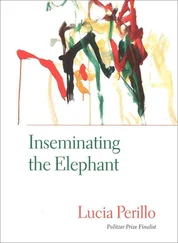In any chronicle of my kayaking, I have no choice but to include Jim, as I could not do this without him. The word husband seems wrong, with its suggestion that marriage confers some sort of virtue. But what are the other choices—“mate”? The robotic “other”? “Partner,” with its law-firm connotations? Or “lover”—god help us. There is simply no good choice.
If I can manage it, I will have swiveled my legs so they dangle off the truck’s bench seat by the time Jim sets up the boat. The heron flaps a few paces away, barely bothering to clear its feet above the shore. When Jim is ready, I grab him in a bear hug and he drags me down, my sneakers scraping across the ramp’s concrete washboard ridges. It takes some finesse to drop my butt over the edge of the boat without tipping it. Once I am settled in the kayak, I am also set loose inside a pleasant fiction, that I am just like any other woman in a big hat, paddling.
Jim makes jokes when I ask him how my helplessness makes him feel, analysis striking him as ridiculous in situations that call for action. Instead, he offers whatever practical solution his own considerable strength can give, when faced with the disasters that have written the history of my body. He is like the person who lifts a car off a child, only in his case this is a phenomenon of daily living. Often spectators are alarmed when they see him dragging me. Then he becomes a hero when they learn what’s going on. Once, in Hawaii, one of the ubiquitous beachside stoner-dudes applauded him for treating his mother with such tenderness.
And because we are pathetic, my knee-jerk reflex is to adopt one of a variety of (somewhat imperious) personas: the mute or curmudgeon, the hyena or duchess. In any of these personalities there is also an element of pride that I try to suppress — this paddling is harder for me than you, whoever you are. But the suppression of pride just feels like another form of it, the way beer carbonates itself by dint of being bottled.
This is the kind of payment I am expected to make on the debt my body has incurred: Jim wants me to participate in his rituals. He wants me to experience the ritual with him even at the cost of carrying me, and he wants my zest even if I have to fake it. Often I try to worm out of going, but I relent because I’m itchy to get out and see the day. Our kayaking is like sex in that emotional authenticity is not always a prerequisite, though it is supposed to be acquired by the time the activity comes to its conclusion.
Maybe a mile across the water in most directions lies another green mass: other harbors and headlands. This is no big open water; the sport is not heroic. All it requires is a high tolerance for boredom, for not much excitement beyond the occasional wake of a speedboat. Stories are made from one thing happening after another, suspense built from expectations that may or may not be satisfied, but rituals are made from repetition. And from the reassurance of the familiar, which is made holy as it is repeated.
Directly across sits Squaxin Island, uninhabited Indian land where a little state park used to operate, off-limits to the public now — though I did trespass there a few years ago when I could walk. On the island I took off my shirt and lay down on the rocks, and though Jim crabbed about my nudity we both did fall asleep, waking to the sound of footsteps, clack and clunk of rock on rock, and I remember thinking that if I kept my eyes closed I could stave off the inevitable encounter with the tribal police. But when I finally looked up, my eyes opened on the muzzle of a deer, chewing some grass and regarding my breasts. I even have a memory of the deer licking salt from the space between them, but I am pretty sure I’ve made this up.
The Indians native to this place traveled via canoes that were formed by hollowing great cedar logs and filling them with boiling water, wedging the hollow wider and wider as the wood softened up. Women’s canoes were large and used for hauling cargo from place to place. They did the grunt-work of gathering, and the water floated the foodstuff home while they steered with their specifically sized women’s paddles. So perhaps not exactly zest but gratitude is the proper frame of mind. Gratitude to the water that carried their tremendous burdens. And now, me.
Today we are going to a place we call Sand Dollar Beach. Because we’re out in the open water where several inlets converge, there is a protected deposit of sand on the back side of a rocky outcrop. Some combination of currents keeps this cove free of mud, which would choke the dollars, clogging the little orifices that are their mouths, at the centers of their flat undersides. The water has little of the murk we normally travel through in town, down at the foot of the bay, whose surface is covered in the summertime with a variety of scums that I try not to blench when entering. It is a luxury to be sitting on top of this clear water. Normally, you can’t see what dwells inside it unless there is a breach.
It’s not uncommon, in season, to see salmon jumping, heart-jolting eruptions when the big fish breaks through and then whops down on the surface. I’ve been told this is how the females break up the ropes of eggs inside their bellies when it’s time for them to spawn. Harbor seals also poke their heads out of the water as we go. When Jim echoes their huffing noises, they stretch their necks and rise to look at him, before eerily and silently sinking.
Inside the water, most visible are the jellyfish: white ghosts that propel themselves by fluffing. When they drift near the surface, I can make out what the field guide says are their gonads, especially distinct inside the large amorphous jellies whose center is occupied by an orange orb, like an egg yolk. At deeper than a foot, though, even the brightest creature is a blur. Whereas the hiker gets her crisp views in the thin air, the paddler gets mostly ominous portents. And this is not just paranoia — the egg-yolk jellyfish really do sting.
There are birds, of course, who traverse the boundary between water and air. And we who live on the air-side of that threshold tend to be spooked or stymied when we see the creature cross over, say if we see the grebe or cormorant submerge and disappear. We wait for it to come back up, but often it just disappears, refusing to give us a neat ending to the story. Because most birds head north to breed, just a few can be found on the water today, mostly the gulls and an occasional pigeon guillemot, a black seabird that arouses us in a way the gulls do not, when it flashes its glamorous red feet. But my gaze requires constant re-supplying; it digests the guillemot quickly and then moves on.
When I was a college student majoring in wildlife management, a professor once gave us the assignment of observing a bird for eight hours straight, following the same bird for as long as possible. I chose a blackbird and found the tedium unbearable — all it did was sit on a sequence of branches, occasionally giving its reedy tweet. Suddenly I knew I could never be a field biologist, a life marked by plodding most of all. My powers of attention were too deficient for me to ever be a romantic loner female biologist with an unkempt ponytail. What I imagine usually outweighs what I observe because life goes by me blurred.
The common run of us become inured even to the rarity if we are forced to sit with it long enough. I think of Robert Browning’s poem “My Last Duchess” (see: in grad school I switched to being an English major), in which an odious duke dwells on his dead wife’s portrait long enough to hint at his having had her killed. But then boredom sets in, and he skips on to some other idiotic rare gewgaw that he owns. And this is part of his offensiveness, that he cannot sustain his attention on anything.
Читать дальше











![Various - Birds and Nature, Vol. 12 No. 5 [December 1902]](/books/745517/various-birds-and-nature-vol-12-no-5-december-thumb.webp)
![Various - Birds and Nature Vol. 11 No. 2 [February 1902]](/books/745533/various-birds-and-nature-vol-11-no-2-february-1-thumb.webp)